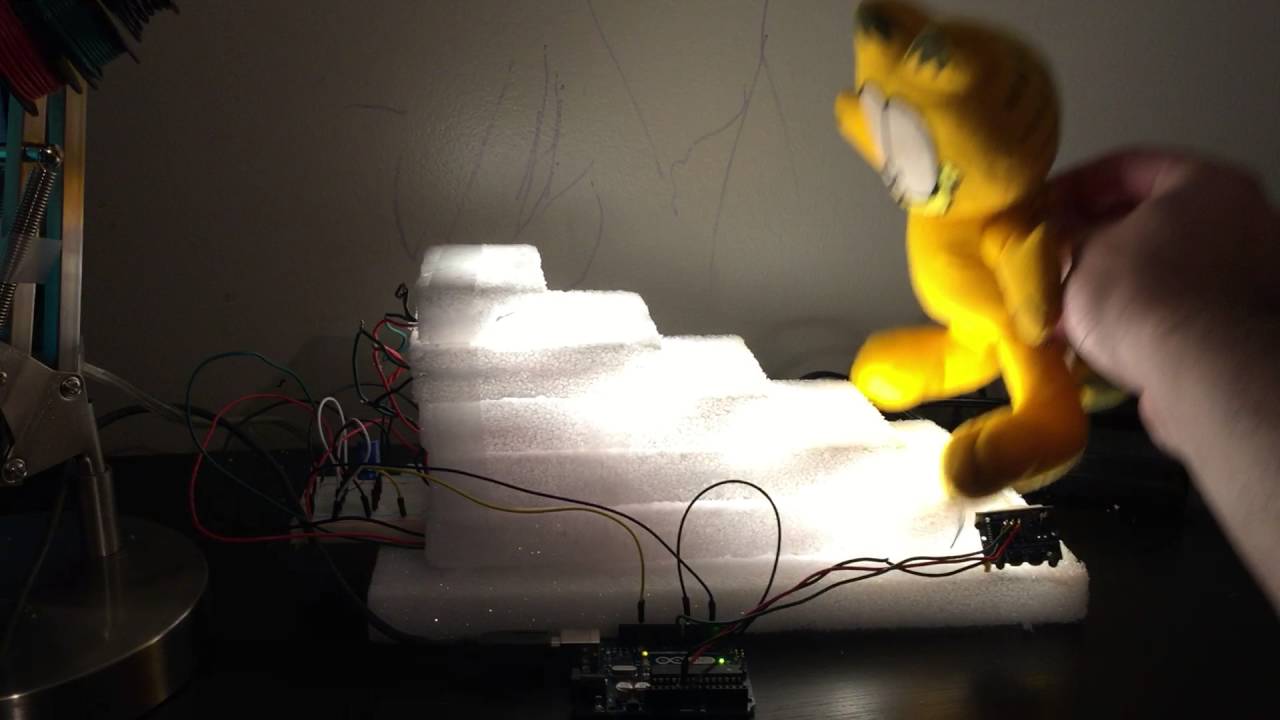Hello everyone,
Short version: electronics newbie. Skip unless you're bored
I work in IT and have been exposed to just about everything a firm can throw at you. I will be starting a series of training starting mid-September and running about 6 months that will take 100% focus. To prep for this, I need to disengage my mind and do something new. I have zero experience with arduinos, electricity, soldering, robotics... and just about everything else hobby/maker related. As of last week, I have given myself 4 weeks to jump in, close the knowledge gap, and make something cool!
Project Overview
I have 13, ~4' wide steps to get to the top of my stairs. I would like to put 2' strips of LEDs (8m/240 LEDs) down the center of the steps. The top and bottom of the stairway would each have a PIR sensor, and it would be run by an Arduino. I know this project has been done a dozen times, and I've waited to post until I had made some progress on my own. It seems like the guides assume a level of prior knowledge, so I need a little help.
Prototype
I'm too much of a perfectionist to go for the real deal, so I started small. I went on a little shopping spree and go myself some materials to make a prototype: Arduino Uno, Soldering Kit, wires, breadboard, etc.
I cut up some foam to look like steps, connected the wires according to guides from the net, added the resistor and capacitor as the adafruit lesson recommended and cut/pasted/hacked some code together to do what I wanted (fade up when bottom sensor is tripped, and down when top sensor is tripped). (see attachment).
Challenges / Next Steps
I have about 2 days of electrical knowledge from building this prototype (I didn't really know the difference between AC and DC before this). I'm here to make sure I'm doing things as safely as possible. According to my research, the RGBW LEDs linked above can consume up to 80mA at full blast. 240 LEDs x 80mA = 19.2A.
I have an ATX power supply that outputs DC 5v at 25A max on one pin, and DC12v at 62A max on another.
Considering that the 5v rail is said to be unstable without load on the 12v, Would it be a good idea to power the Arduino from the 12v and the LEDs from the 5v? Or should I use something like this Singpad 5v 30A Power Supply
If I do go with the Singpad power supply, how would I power the Arduino (9v-12v) from it? or would I need a separate power supply?
Some charts are suggesting 4-8 guage wire. Will I be able to solder that size onto the LEDs?
Does the resistor and capacitor size need to change?
Are there additional parts that I should consider when scaling this up? For example, I read about an in-line fuse holder that sounded like it was a good idea.
These may be silly questions, but again I'm very new to this stuff.
Thanks,
Morv

